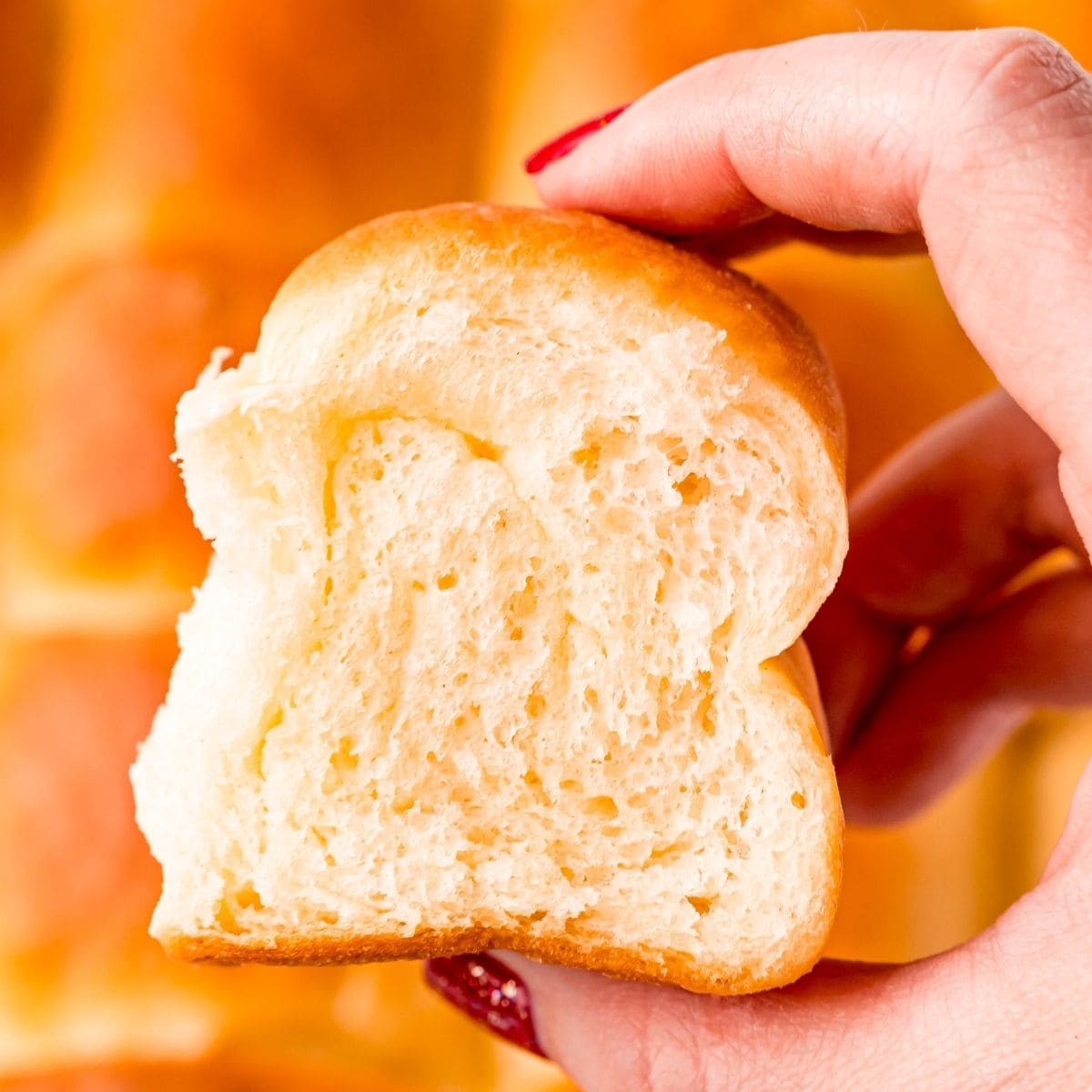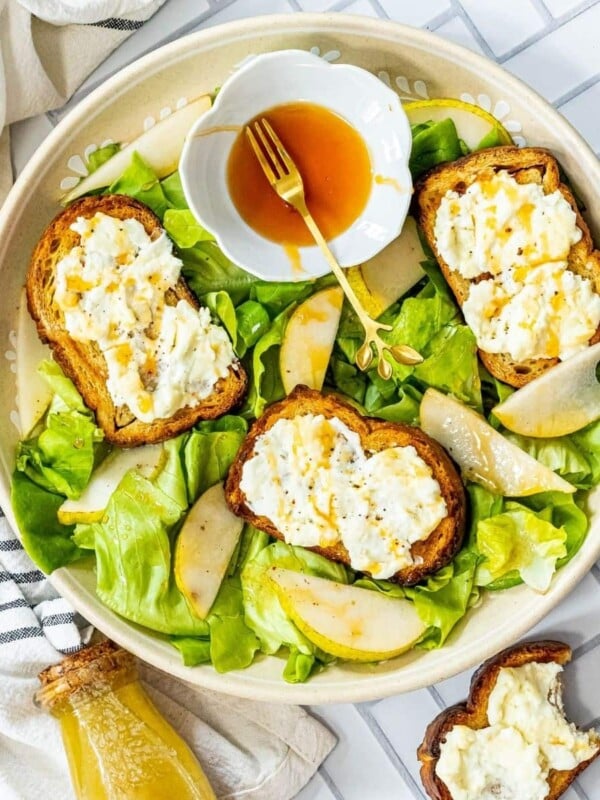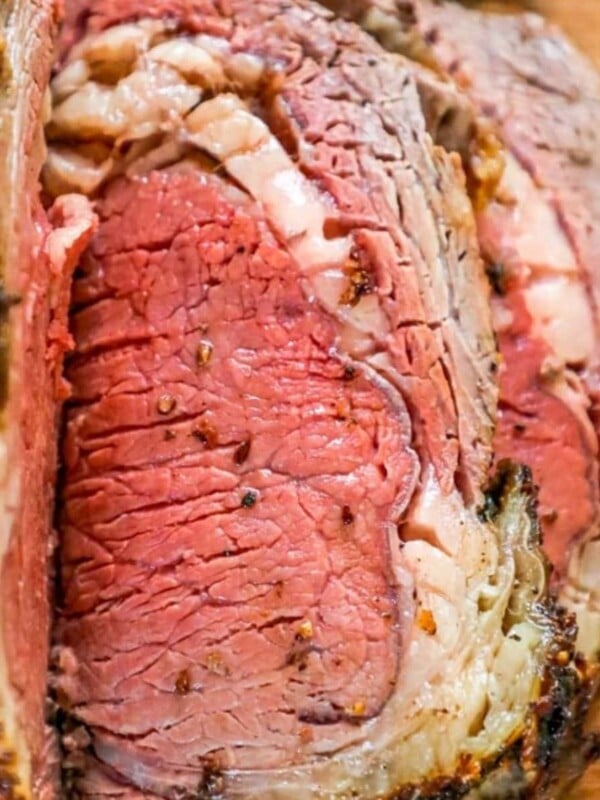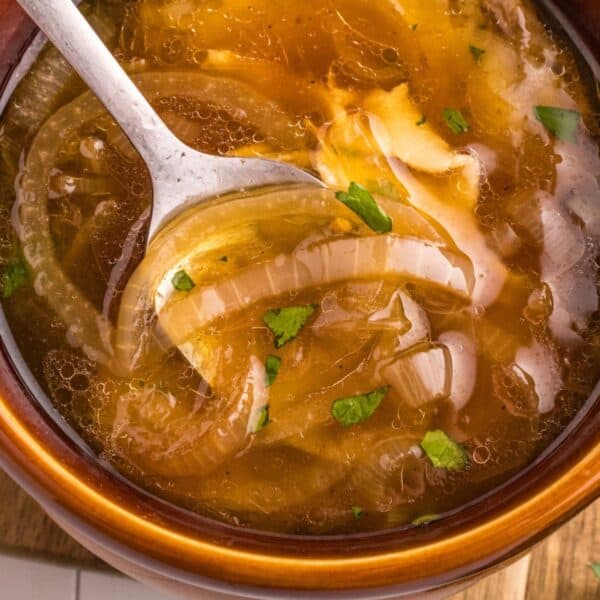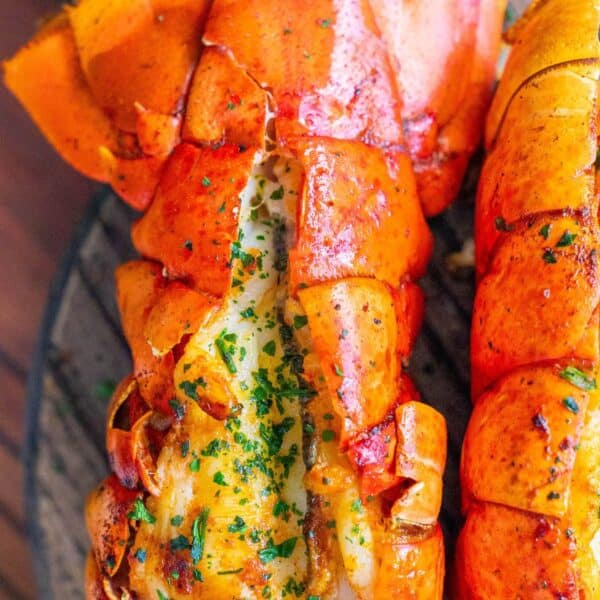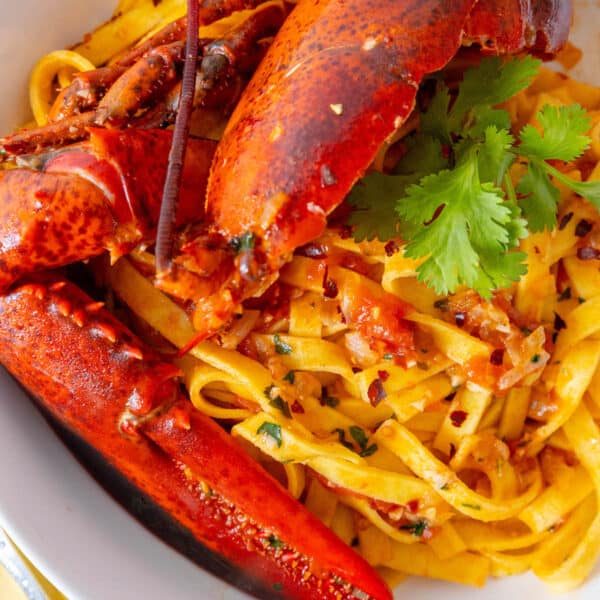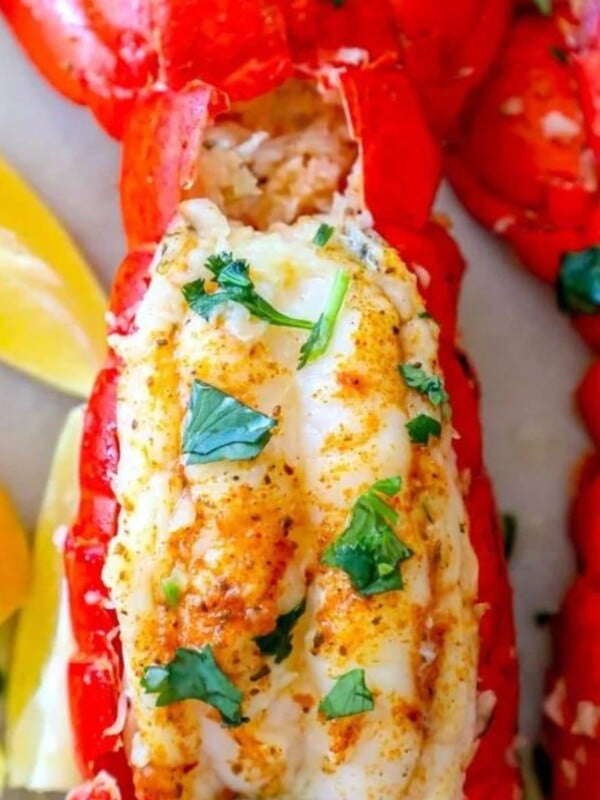This post contains affiliate links. Please read our disclosure policy.
Perfect easy boiled whole lobster that is simple to cook, tender, juicy, and full of flavor -perfect for dinner dates, holidays, or a romantic meal!
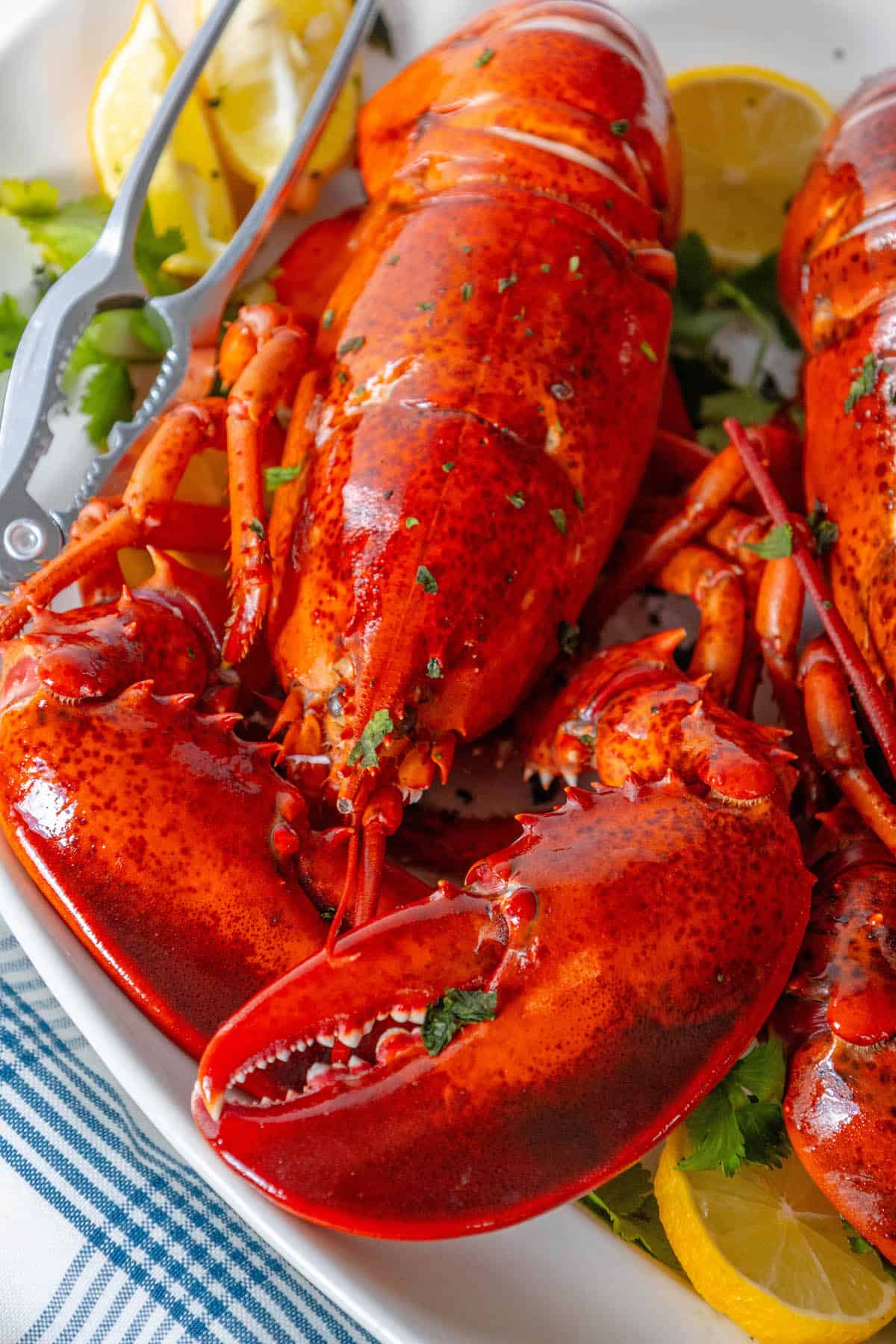
Don’t want all the extras in a recipe post? We provide a skip to recipe button in the top left corner, as well as a clickable table of contents, just below, to help make this page easier to navigate.
At Sweet C’s, I add lots of tips in all of my recipes – because I am a home cook without any formal training, and I find I am more confident making dishes when I understand why it works, and what each ingredient means to the flavor of a recipe. My goal is for even the most beginner home cook to feel empowered in the kitchen.
Table of Contents
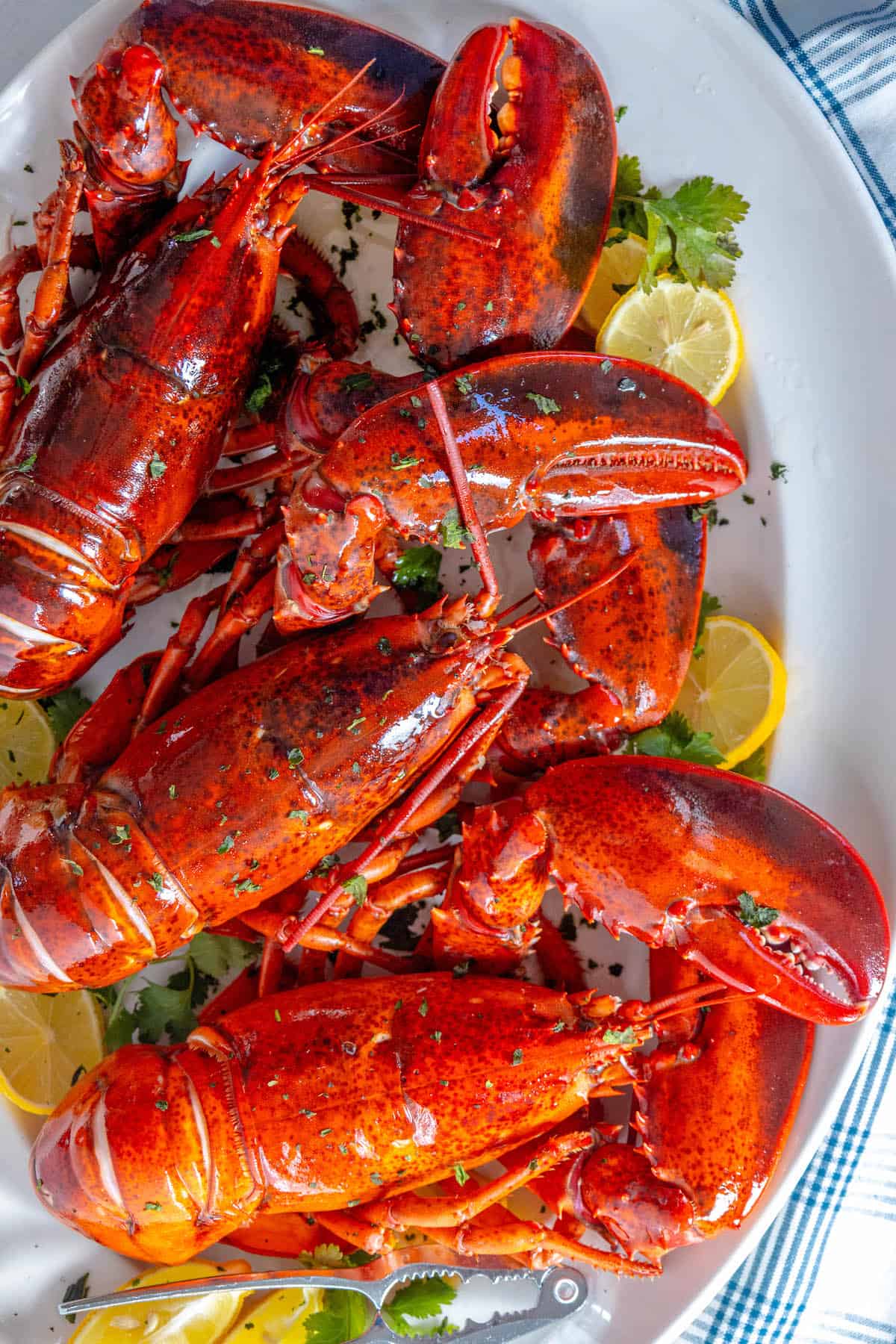
How to Boil Lobster & Eat It
Boiling lobster is a classic decadent meal – and great for Valentines Day, birthdays, holidays – or anytime you want a rich extravagant meal. It’s also a great way to cook and prep lobster meat for other dishes – like Garlic Butter Naked Lobster Rolls, lobster pasta, Lobster Bisque, Lobster Risotto, lobster busara – and more!
You can head to our Lobster Recipe archives for more out-of-this-world recipes with our favorite crustacean.
In just a few easy steps, you’ll have a mouthwatering lobster dish that’s perfect for special occasions or a delightful indulgence any day of the week.
Let’s dive into the world of boiled lobster and discover how to savor every succulent bite!
If you want to make your kitchen eco-friendly while saving money read this article about my favorite swaps to save over $1,000 a year!
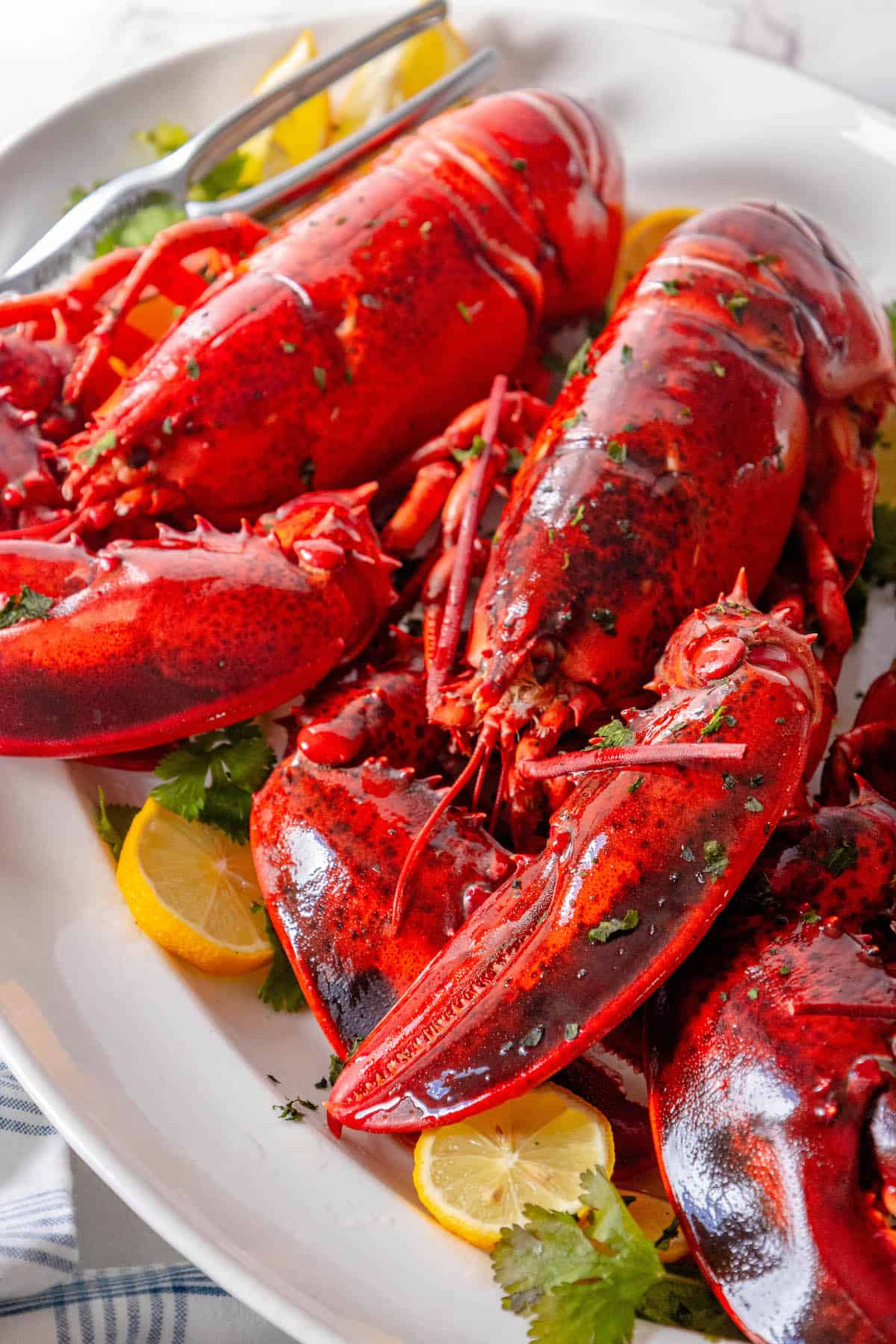
How to Boil Lobster
- Live Lobsters (about 1 1/2 pounds each): The star of the dish, lobsters provide sweet and succulent meat. When boiled correctly, the lobster meat becomes tender and flavorful, making it the centerpiece of the meal.
- Water (4-6 quarts): Water is the cooking medium for boiling lobsters. It helps to cook the lobster evenly, ensuring that the meat remains moist and delicious. The amount of water needed depends on the size of the pot and the lobsters.
- Lemons (halved): Lemons are added to the boiling water to infuse a subtle citrusy flavor into the lobster meat. They also help balance the richness of the lobster and enhance its natural sweetness.
- Garlic Cloves (smashed): Smashed garlic cloves contribute a mild garlic flavor to the boiling liquid, which complements the lobster’s taste. They add depth to the overall flavor profile.
- Bay Leaves: Bay leaves are aromatic and provide a subtle herbal note to the boiling water. They contribute to the overall fragrance of the dish.
- Salt (about 2 tablespoons, or to taste): Salt is essential for seasoning the water, enhancing the natural flavor of the lobster, and ensuring it’s well-seasoned. It also helps maintain the lobster’s texture during cooking.
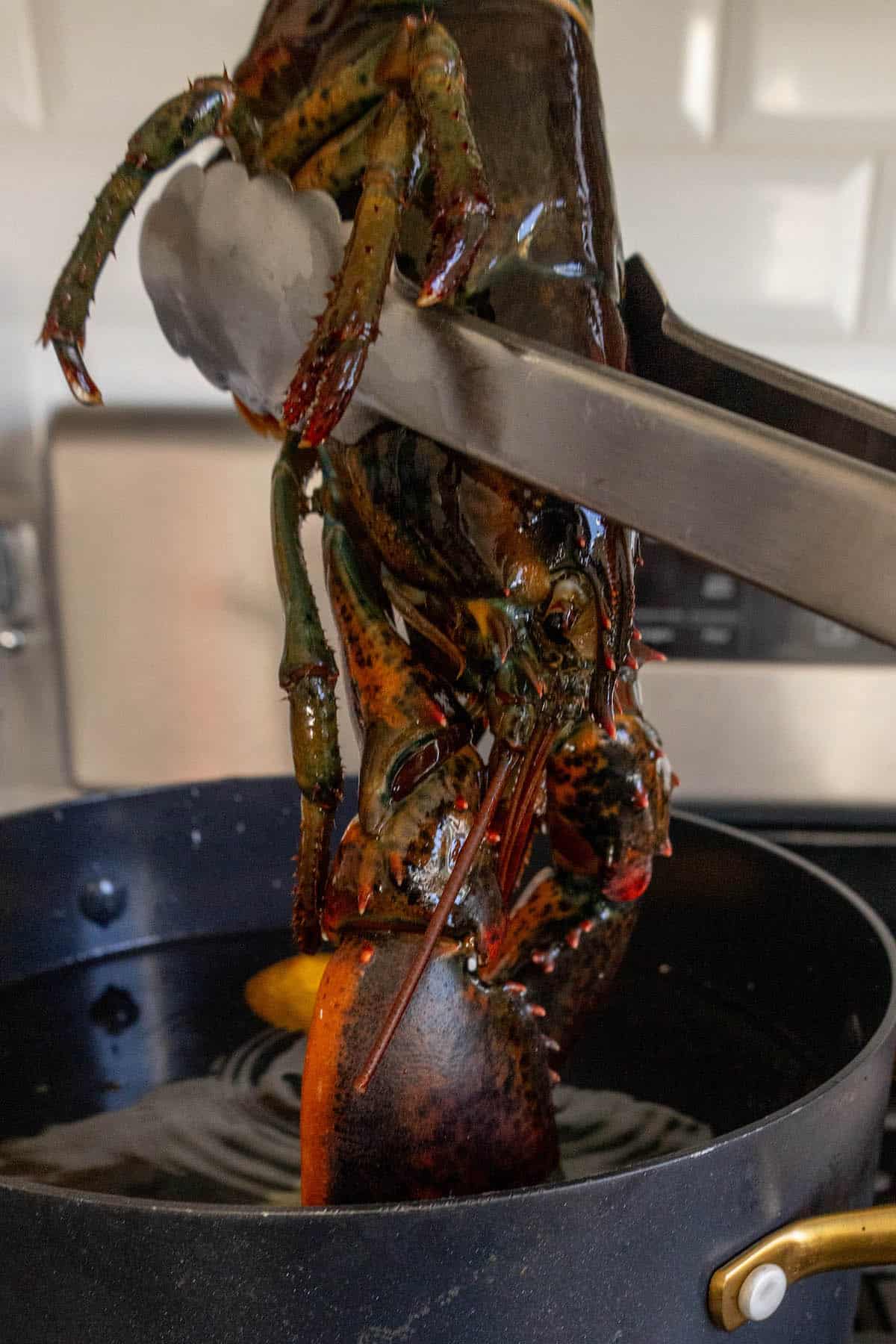
Once you gather your tools and ingredients, we will use the following process:
- Prepare the Lobsters:
- Make sure you have live lobsters. It’s important to cook them while they’re still alive for the freshest taste.
- Lay a kitchen towel on a countertop. Place a lobster on its back, with its head facing you. Hold the lobster firmly with one hand.
- Dispatch the Lobster Humanely:
- Using a sharp knife, locate the cross-shaped mark just behind the lobster’s head.
- Insert the knife into the mark and swiftly and firmly cut through the head. This dispatches the lobster quickly and humanely. Be cautious during this step.
My Pro Tip
Recipe Tip
Lobster tastes the sweetest when cooked immediately after it has been butchered. Cutting with a knife is more humane than boiling, though some might find this hard to do personally, so you can have your fishmonger do it. Plan on immediately making the lobster when home.
- Boil the Water:
- Fill a large pot with enough water to cover the lobsters. Add a generous amount of salt to the water, making it taste like seawater. Aim for about 2 tablespoons of salt per quart of water.
- Place the pot on the stove and bring the water to a rolling boil.
- Boil the Lobsters:
- Carefully add the live lobsters to the boiling water headfirst. To avoid splashing, you can use long kitchen tongs or wear oven mitts.
- Cover the pot and let the lobsters cook for the appropriate time, typically about 9-12 minutes for 1 1/2 to 2-pound lobsters. Refer to cooking time guidelines for different lobster sizes.
- The lobsters are done when their shells turn bright red, and the meat is opaque.
- Remove and Serve:
- Using tongs, carefully lift the cooked lobsters out of the boiling water and let them drain briefly.
- Serve the boiled lobsters hot with optional melted butter and lemon wedges on the side.
- Crack and Enjoy:
- To enjoy the lobster meat, use lobster crackers and picks to crack open the shells and extract the tender meat from the claws, tail, and legs.
- Dip the lobster meat in melted butter for added flavor, and squeeze a lemon wedge over it if desired.
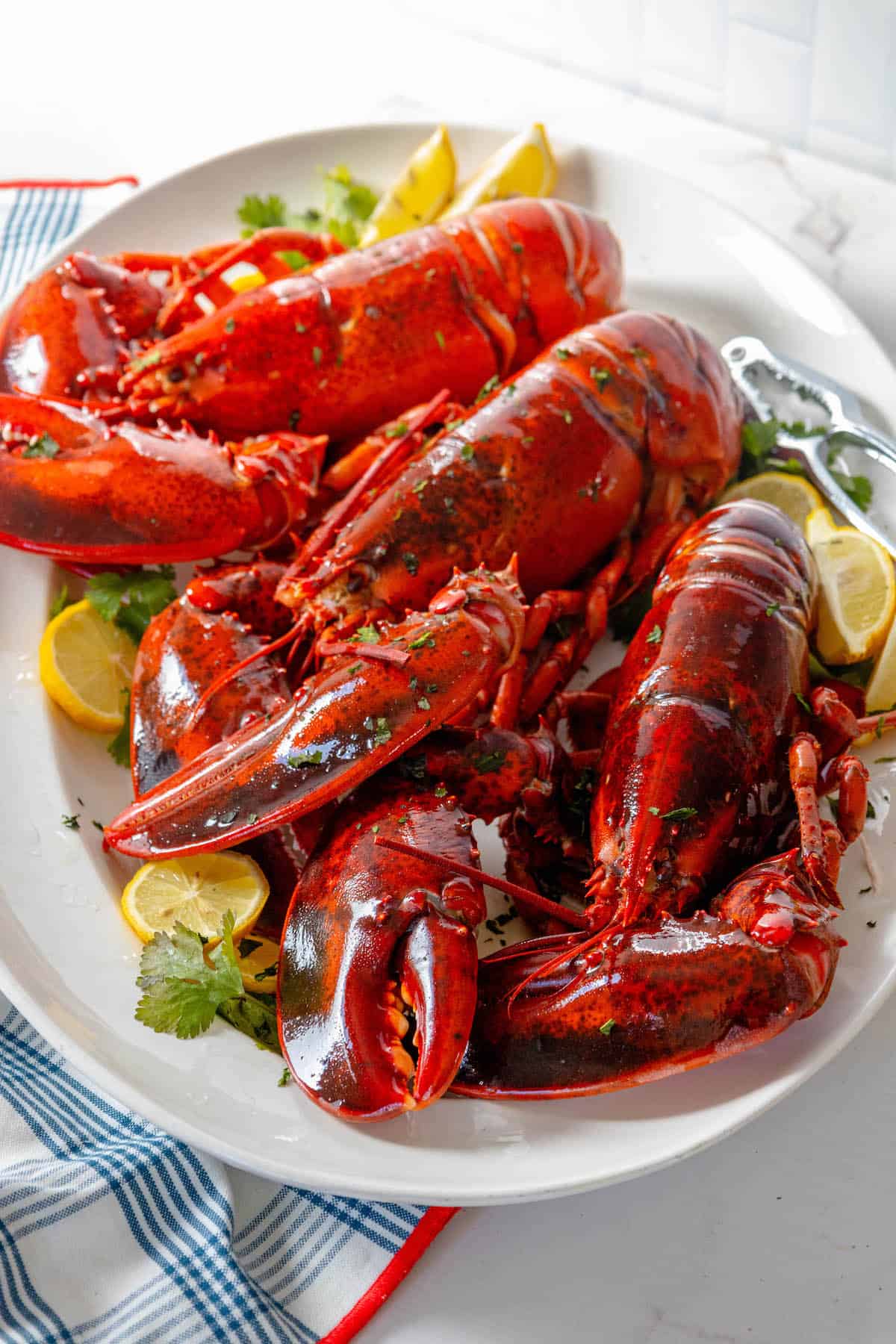
Tips and Tricks to Perfect Boiled Lobster
Choose Fresh Lobsters: Start with live lobsters for the freshest taste. Look for lively lobsters with active tails and intact claws.
Cold water vs warm water lobsters. Cold water and warm water lobsters are different – warm water lobsters don’t have as big of claws, and are more prone to overcooking.
- Cold Water Lobster:
- Flavor and Texture: Generally considered superior in flavor and texture. The meat is tender, sweet, and less likely to become rubbery when cooked.
- Size and Meat Quality: Cold water lobsters, especially those from the North Atlantic, tend to have larger claws, yielding more meat. The meat is also firmer and holds together well during cooking.
- Price: Typically more expensive due to the higher quality and the more rigorous fishing regulations in cold water regions.
- Sustainability: Often sourced from well-regulated fisheries, making them a more sustainable choice in many cases.
- Warm Water Lobster:
- Flavor and Texture: The meat can be slightly less sweet and tender compared to cold water lobster. It’s also more prone to becoming mushy if overcooked.
- Size and Meat Quality: Warm water lobsters usually have a higher proportion of tail meat, but the overall quality of the meat might be slightly inferior to their cold water counterparts.
- Price: Generally less expensive, making them a more budget-friendly option.
- Availability: Often more readily available in regions closer to warm water sources, like the Caribbean.
My Pro Tip
Recipe Tip
Generally, for dishes where the ingredient is the main focus, like eating boiled lobster as the main dish, opt for a cold water lobster. Warm water lobster is a fine choice for dishes like pasta or soup where it is not the main component.
Dispatch Humanely: It’s important to dispatch the lobster humanely before boiling. Quickly and firmly cut through the lobster’s head just behind the cross-shaped mark using a sharp knife.
Use Salted Water: Salt the boiling water generously, aiming for a salt concentration similar to seawater (about 2 tablespoons of salt per quart of water). The salt enhances the flavor of the lobster meat.
Flavors: You can increase the seasoning for your lobster by placing sliced lemons, bay leaves, garlic, or herbs you like to the boiling pot of water for additional flavor.
My Pro Tip
Recipe Tip
Add more flavor to your lobster by adding seasonings or sliced lemons to your salted water.
Properly Sized Pot: Use a large pot with enough room to accommodate the lobsters without overcrowding. Crowding the pot can affect the even cooking of the lobsters.
Bring Water to a Rolling Boil: Ensure the water comes to a rolling boil before adding the lobsters. A vigorous boil helps cook the lobsters quickly and evenly.
Cooking Time: Follow recommended cooking times based on the size of the lobsters. Overcooking can make the meat tough, while undercooking can lead to raw or partially cooked lobster.
Check for Doneness: Lobsters are done when their shells turn bright red, and the meat is opaque. You can also gently tug on one of the lobster antennae; if it comes out easily, the lobster is likely done.
Cool Gradually: After boiling, remove the lobsters from the pot and let them cool slightly at room temperature or under running cold water. This helps stop the cooking process and prevents overcooking.
Crack with Care: Use lobster crackers and picks to crack open the shells and extract the meat. Be careful not to crush the delicate meat while cracking.
Serve Immediately: Lobster is best when served hot and fresh. Serve it with melted butter and lemon wedges for a classic accompaniment.
Enjoy the Tomalley and Roe: The greenish tomalley and red roe (if present) are considered delicacies by some. You can enjoy them as part of your lobster feast.
Practice Safe Handling: Be cautious when handling live lobsters, as they can have sharp claws. Use kitchen tongs or wear oven mitts to protect your hands during the boiling process.
FAQs
Look for lively lobsters with active tails and intact claws. Avoid lobsters that appear sluggish or have damaged shells.
To dispatch a lobster humanely, quickly and firmly cut through the lobster’s head just behind the cross-shaped mark using a sharp knife.
Use a large pot with enough room to accommodate the lobsters without overcrowding. It’s essential to provide sufficient space for even cooking.
Aim for a salt concentration similar to seawater, which is about 2 tablespoons of salt per quart of water. Salt enhances the flavor of the lobster meat.
Cooking times vary depending on the size of the lobsters. A general guideline is to boil small lobsters (1-1.25 lbs) for about 8-10 minutes, medium-sized lobsters (1.5-2 lbs) for 10-12 minutes, and larger lobsters (2-3 lbs) for 12-14 minutes. Adjust cooking times accordingly.
Lobsters are done when their shells turn bright red, and the meat is opaque. You can also gently tug on one of the lobster antennae; if it comes out easily, the lobster is likely done.
Yes, it’s recommended to let the lobsters cool slightly after boiling. You can do this by placing them at room temperature for a few minutes or running them under cold running water. This helps stop the cooking process and prevents overcooking.
Yes, you can store cooked lobster in the refrigerator for up to 2-3 days. Keep it in an airtight container to maintain freshness.
Use lobster crackers and picks to crack open the shells and extract the meat. Be careful not to crush the delicate meat while cracking.
Boiled lobster is often served with melted butter and lemon wedges for dipping. Some people also enjoy the tomalley (greenish substance) and roe (if present) as delicacies.
Be cautious when handling live lobsters, as they can have sharp claws. Use kitchen tongs or wear oven mitts to protect your hands during the boiling process.
The white coating you sometimes see on cooked lobster is actually a protein called albumin. Albumin is present in the lobster’s flesh and becomes solid when it is cooked. When lobster is cooked, especially if it is cooked rapidly or at high temperatures, the heat causes the albumin to coagulate and form a white coating on the surface of the meat. It’s perfectly safe to eat and doesn’t indicate anything wrong with the lobster – and can be wiped away with a warm, moist towel.
You can add a tiny bit of olive oil to a paper towel and gently rub around the cooked lobster shell to give it a perfect glisten and make the red shell look redder – this is purely decorational, but if you are throwing a dinner party or making a romantic dinner, it is a nice touch to make your lobster look picture-perfect!
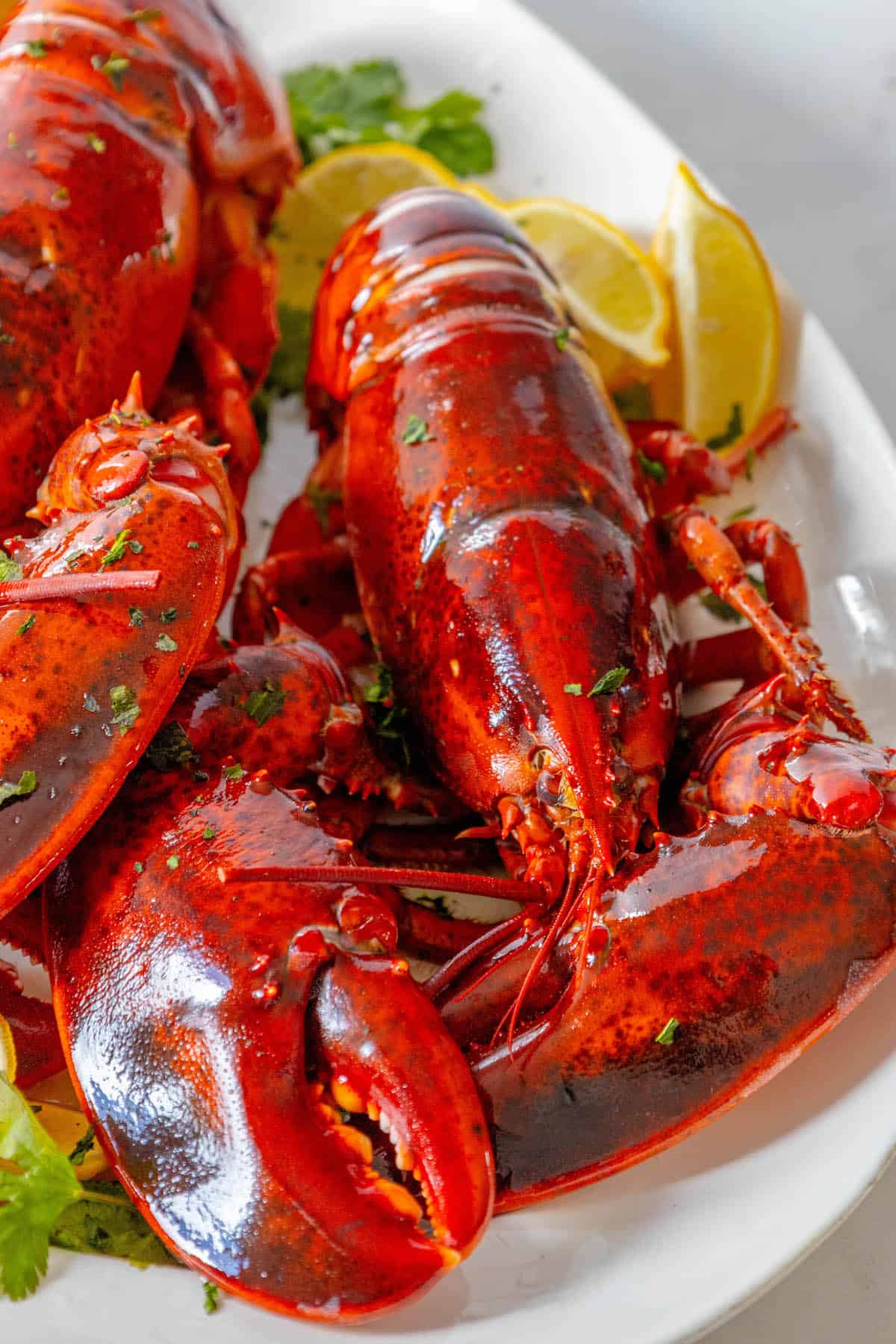
What to Serve With Boiled Lobster
Drawn Butter: A classic accompaniment to lobster is melted butter, often flavored with a touch of lemon juice and garlic. It enhances the natural sweetness of the lobster meat.
Lemon Wedges: Fresh lemon wedges can be squeezed over the lobster to add a bright, citrusy contrast to the rich lobster flavor.
Corn on the Cob: Sweet corn on the cob is a fantastic side dish that pairs well with lobster. It adds a touch of sweetness and texture to the meal.
Potato Salad: A creamy potato salad, either traditional or with a twist like a mustard vinaigrette, can be a comforting side dish that complements the lobster’s richness.
Coleslaw: Coleslaw, with its crunchy cabbage and creamy dressing, provides a nice contrast in both texture and flavor to the lobster.
Garlic Bread: Crusty garlic bread or a baguette is a great choice for soaking up any leftover lobster juices and butter.
Roasted Vegetables: Roasted asparagus, broccoli, or Brussels sprouts can add a healthy and flavorful element to your lobster meal.
Rice or Pasta: Consider serving lobster with a simple rice pilaf or pasta in a light garlic and herb sauce for a more substantial meal.
Salad: A crisp garden salad with fresh greens, tomatoes, cucumbers, and a light vinaigrette can provide a refreshing contrast to the lobster. We love our Strawberry Crunch Salad – which perfectly compliments lobster’s sweet, light flavor.
Champagne or White Wine: To drink, you can pair boiled lobster with a crisp and chilled white wine or even champagne for an extra touch of elegance.
Seafood Dipping Sauce: If you like additional flavors, consider offering a seafood dipping sauce like cocktail sauce or aioli.
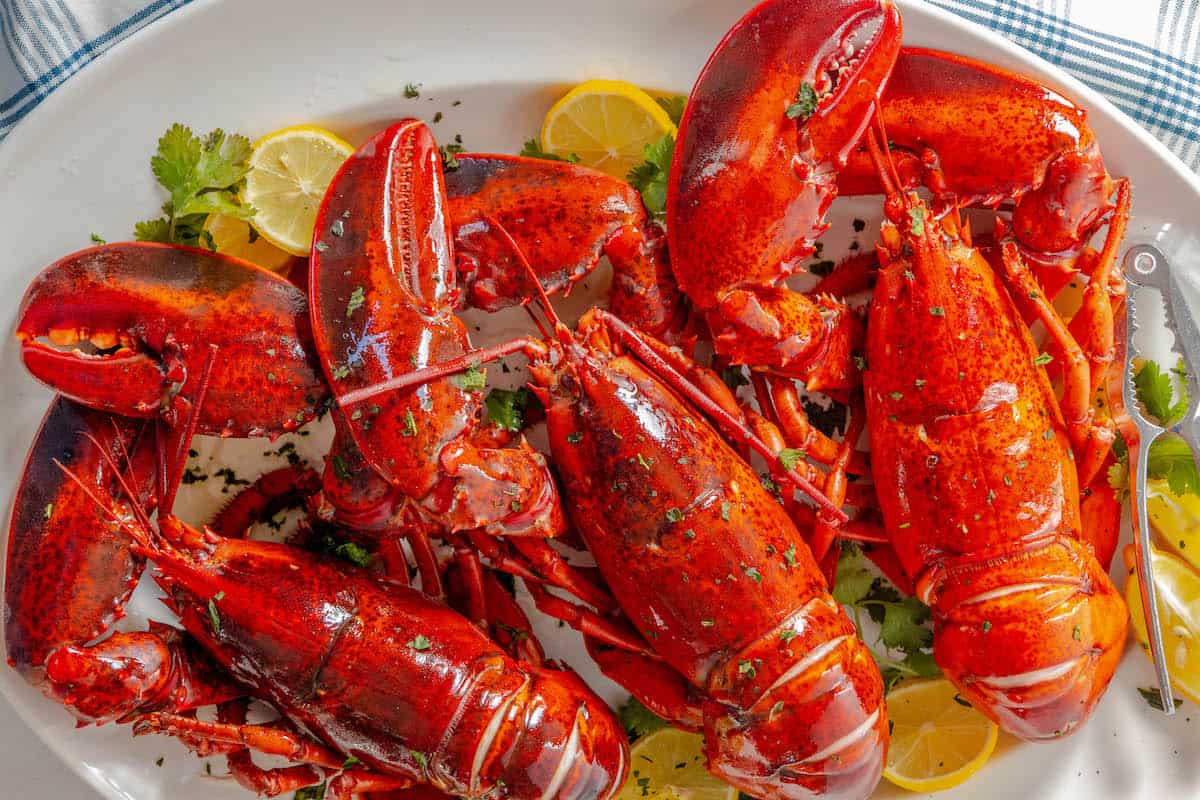
How to Cook Lobster
If you love this easy recipe please click the stars below to give it a five star rating and leave a comment! Pease also help me share on Instagram, Facebook, and Pinterest!
Share on Facebook
SharePin this now to find it later
Pin ItFollow on Instagram
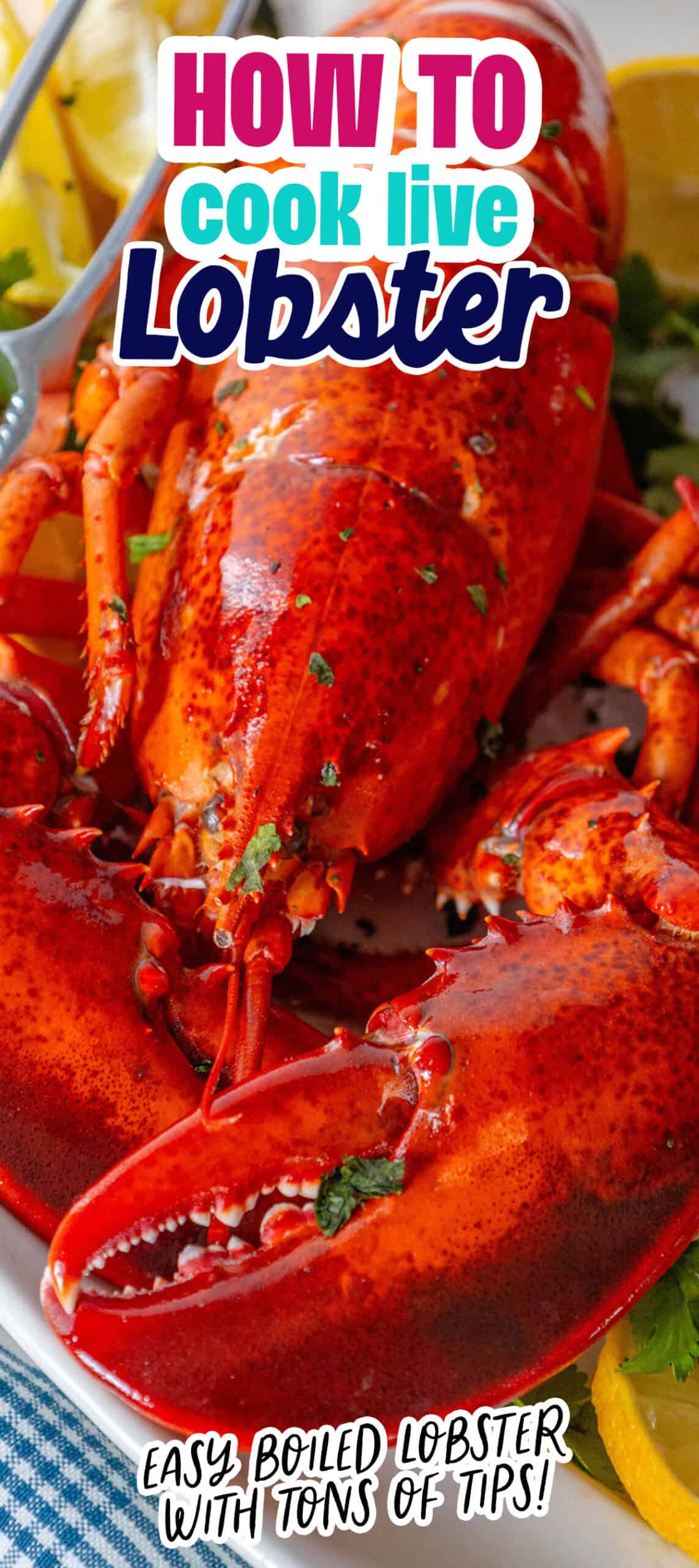
Only have 30 minutes to get dinner on the table? Sign up for my 30 minute dinner plans direct to your inbox!
Find and shop my favorite products in my Amazon storefront here!
Boiled Lobster
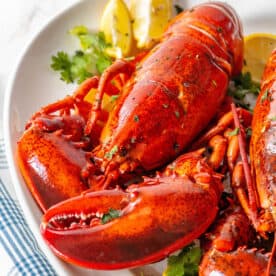
Ingredients
- 2 live lobsters, about 1 1/2 pounds each
- 4-6 quarts of water
- 2 lemons, halved
- 4-6 garlic cloves, smashed
- 2 bay leaves
- Salt, about 2 tablespoons, or to taste
Instructions
- Start by ensuring the lobsters are live and healthy. Check for movement and ensure they're not showing any signs of spoilage.
- If you need to, you can quickly clean the lobsters by rinsing them under cold water and removing any visible debris or seaweed.
- Use a large pot, preferably one that can comfortably hold both lobsters without overcrowding. Fill it with 4-6 quarts of water, depending on the size of the pot.
- Squeeze the juice of the halved lemons into the pot and then toss the lemon halves in as well.
- Add the smashed garlic cloves, bay leaves, and salt to the boiling water. Stir to distribute the flavors.
- Gently lower the live lobsters into the pot using tongs or a long-handled utensil to avoid getting splashed by the hot water.
- Cover the pot with a lid and allow the water to return to a rolling boil.
- Once the water is boiling again, start the timer. Boil the lobsters for about 9-12 minutes per pound of lobster. For example, if your lobsters are 1 1/2 pounds each, boil them for 13-18 minutes. You want the lobsters to turn bright red, and the internal temperature of the tail meat should reach 140°F (60°C).
- Carefully lift the cooked lobsters from the boiling water using tongs or a strainer, allowing any excess water to drain back into the pot.
- Place the lobsters on a large plate or tray and let them rest for a few minutes to allow the juices to redistribute.
- Serve the boiled lobsters hot with your choice of side dishes and accompaniments. Don't forget the lemon wedges, drawn butter, or any other sauces you prefer.
Nutrition
Nutrition information is automatically calculated, so should only be used as an approximation.
